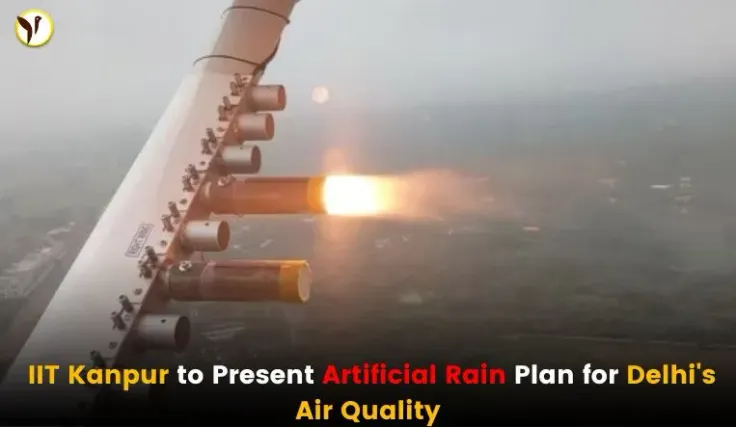A team of experts from the Indian Institute of Technology (IIT)-Kanpur is preparing to present a comprehensive artificial rain plan to address Delhi's persistent 'severe' air quality.
The proposal suggests conducting the artificial rain experiment around November 20 and 21, aligning with a forecast indicating 40% cloud cover over the capital, a crucial factor for the process.
Following the plan's review, the Delhi government plans to submit it to the Supreme Court, seeking the Center's cooperation. If the Supreme Court approves, experts could initiate the first pilot project of artificial rain in Delhi on November 20 and 21.
Read: Common Mistakes to Avoid in CFA Exam Prep
Environment Minister Gopal Rai highlighted that the IIT-Kanpur team emphasized the necessity of at least 40% cloud cover for the artificial rain process. Minister Rai, Revenue Minister Atishi, and other officials met with IIT Kanpur experts to discuss the proposed artificial rain strategy.
Artificial rain, or cloud seeding, is a weather modification technique that involves introducing substances like silver iodide or potassium iodide into clouds through aircraft or helicopters.
The success of this method depends on specific meteorological conditions, such as moisture-laden clouds and suitable wind patterns.
Read, Investment Strategies: Exploring Different Approaches to Grow Your Wealth
The primary goal of artificial rain is to stimulate precipitation and address drought conditions in targeted regions. This approach is used for agricultural, environmental, and water resource management.
Notably, Delhi's air pollution, likened to smoking about 10 cigarettes a day by medical experts, poses increased risks to vulnerable populations, including children, the elderly, and individuals with pre-existing health conditions.
To stay updated, Pin our page!
For more, Join our Free Workshops.
Also read: Israel-Hamas Conflict Persists into Second Month Amid Cease-Fire Debate







